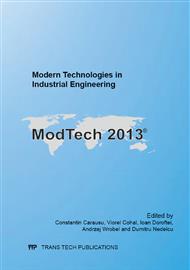[1]
K. Allen: How ESD damage affects OEMs and what they can do to mitigate the damage, PC/104 Embedded Solution (2002).
Google Scholar
[2]
J. Paasi, S. Nurmi, T. Kalliohaka, G. Coletti, F. Gustavino, et al., Electrostatic testing of ESD-protective clothing for electronics industry, Electrostatics 2003 Conference (2003) 239-246.
DOI: 10.1201/9781420034387.sec6
Google Scholar
[3]
G. Baumgartner, Consideration for developing ESD garment specifications, ESD TR 05-00 Report, ESD Association (2000).
Google Scholar
[4]
Standard EN 1149-5: 2008, Protective clothing - Electrostatic properties - Part 5: Material performance and design requirements, (2008).
Google Scholar
[5]
Standard IEC 61340-5-1: Protection of electronic devices from electrostatic phenomena – General requirements, (1998).
Google Scholar
[6]
Standard EN 1149-1: Protective clothing – Electrostatic properties – Part 1: Test methods for measurement of surface resistivity, (1996).
Google Scholar
[7]
Standard EN 100015-1: Protection of electrostatic sensitive devices. Part 1: General requirements, (1992).
Google Scholar
[8]
M. Cieslak, S. Wrobel, I. Kaminska, M. Lao, Functional Upholstery Materials for Protection Against Electrostatic Risk, Fibres Text. East. Eur. 17 (2009) 52-58.
Google Scholar
[9]
J.N. Chubb, Comments on methods for charge decay measurement, J. Electrostat. 62 (2004) 73-80.
Google Scholar
[10]
Standard IEC 61340-2-1: Electrostatics - Part 2-1: Measurement methods - Ability of materials and products to dissipate static electric charge, (2002).
DOI: 10.3403/02656675u
Google Scholar
[11]
Standard EN 1149-3: Protective clothing; Electrostatic properties; Part 3: Test method for measurement of charge decay, (2004).
Google Scholar
[12]
F. Gustavino, G. Coletti, A. Dardano, E. Torello, Some experiments about the triboelectric performances of composite textiles, 2004 Annual Report Conference on Electrical Insulation and Dielectric Phenomena (2004) 85-88.
DOI: 10.1109/ceidp.2004.1364195
Google Scholar
[13]
G. Coletti, F. Guastavino, E. Torello, A new approach to obtain data about the charge decay in sample of textiles for ESD garments, Proceedings of Electrical Insulation Conference and Electrical Manufacturing & Coil Winding Technology Conference (2003).
DOI: 10.1109/eicemc.2003.1247933
Google Scholar
[14]
G. Coletti, F. Guastavino, E. Torello, A comparison between the static performances of two different families of composite dielectric fabrics used in ESD protective clothing, Conference on Electrical Insulation and Dielectric Phenomena (2003).
DOI: 10.1109/ceidp.2003.1254804
Google Scholar
[15]
J.N. Chubb, Tribocharging studies on inhabited cleanroom garments, J. Electrostat. 66 (2008) 531-537.
DOI: 10.1016/j.elstat.2008.06.001
Google Scholar
[16]
J. Paasi, T. Kalliohaka, T. Luoma, R. Ilmén, S. Nurmi, Contact charging method for the measurement of charge decay in electrostatic dissipative materials, Proc. Electrostatics 2003 Conf. (2004) 137-142.
DOI: 10.1201/9781420034387.ch22
Google Scholar
[17]
C. Donciu, Core conductive yarn based integral knitted ESD Garments. Part I. Metallic core conductive yarns investigation, 2013 International Conference on Future Energy & Materials Research (2013), Singapore.
DOI: 10.4028/www.scientific.net/amr.772.467
Google Scholar
[18]
C. Donciu, Core conductive yarn based integral knitted ESD Garments. Part II. Carbon composite yarns investigation, 2013 International Conference on Future Energy & Materials Research (2013), Singapore.
DOI: 10.4028/www.scientific.net/amr.772.474
Google Scholar
[19]
Japanese Industrial Standard JIS L 1094: 1997 Testing methods for electrostatic propensity of woven and knitted fabrics, (1997).
Google Scholar


